Yi 4K action camera review: High on performance, low on price, GoPro killer
Priced at Rs 8,999 only, the Yi 4K action camera is a superb offering for those seeking 4K videos using a standalone compact camera.

Yes, you can use smartphones today to capture 4K videos with great quality. However, the smartphone is not equipped for environments where action cameras can be used. Smartphones are bulkier, have their own set of restrictions, and are more expensive. Action cameras, on the other hand, are built rugged — they are smaller, light-weight and do just one job – record the video, unlike smartphones which are multitasking devices.

When one thinks of action cameras, GoPro is the only name that usually pops up. The feature-set, performance and build that GoPro offers are simply great; but the price is no joke either. However, if you want a cheaper alternative with almost no compromising on the performance, you should take a look at Yi Technology’s Yi 4K Action Camera. The recorder offers 4K recording that can be compared to what GoPro offers, but you would have to compromise on the feature set that GoPro has to offer. We give our take on the Yi counterpart and tell you why we would recommend this camera over GoPro, simply for the budget seekers.

The Yi 4K Action Camera is the same size as a GoPro, but slightly slimmer. While the GoPro has a rubber body, the Yi has a complete plastic build. Both have protruding cameras in common. Sporting a larger display, the Yi has a 2.19-inch 640x360 resolution panel with a touch interface to handle all the settings and tasks. The Yi has just a single button that doubles up as a power and shutter release and is located on the top with a small LED. Alongside the button are two microphones for stereo audio and a tiny speaker grille. The left has a small rubber flap that houses a micro USB port for charging and data transfer, while the bottom is home to a 1400mAh battery and the micro SD card slot that can hold up to 64GB SDXC cards. The bottom also sports a screw mount for a tripod. The front has a protruding camera lens and an LED that shows the status of the camera. In comparison to the GoPro, there is an additional simple monochrome LCD display up front to know the status of the camera and more details shown there. In the case of Yi, everything is on the rear display itself.
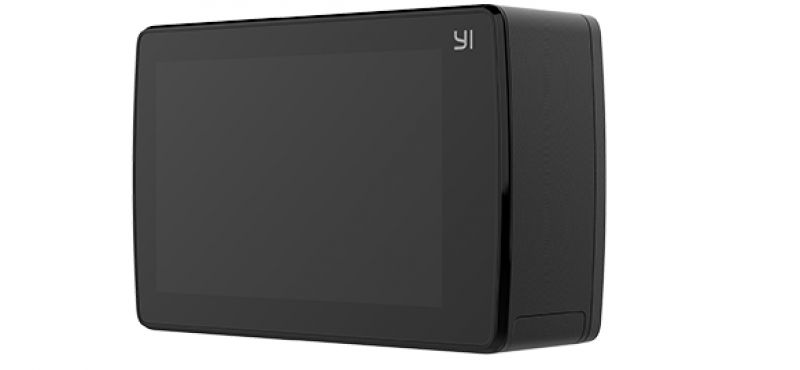
The body or chassis is tough and rugged, made from hard plastic and will take a few beatings with ease. It measures 65mm x 42mm x 30mm and is pretty compact. The display screen is a scratch-resistant Gorilla Glass, but does not sport an oleophobic coating — you will be constantly wiping the screen, which is important when shooting outdoors in broad sunlight. Unlike the GoPro, the Yi does not sport any waterproof exterior, and you will need a housing if you are planning to grab videos while on a water trip or during the rains. Nevertheless, the Yi 4K Action Camera is very simple to operate and ensures that you get what is needed from it. It comes with a 12-month warranty period.
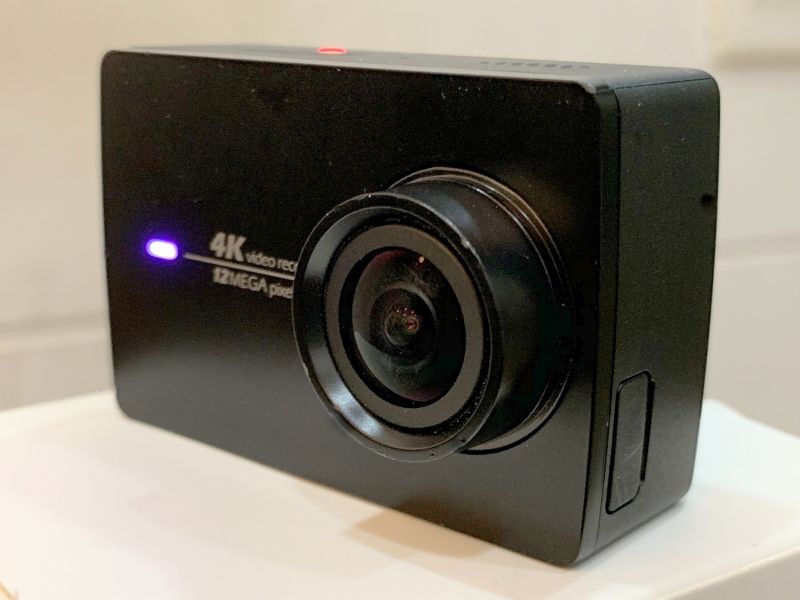
Below the hood, the Yi 4K Action Camera is powered by an Ambarella A9SE chipset that runs on an 800 MHz dual-core Cortex-A9 ARM CPU. The chipset is equipped with a high-performance digital signal processing (DSP) subsystem with a 32-Mpixel image sensor pipeline (ISP), and an advanced H.264 encoder capable of 4K resolution. The image sensor is a 1/2.3-inch Sony IMX377 module that can produce 12 megapixels. Atop the sensor is an f/2.8 aperture 155-degree wide-angle lens (7 lens setup) that can withstand a 7G force and capture wide-angle shots up to 155 degrees. To communicate with your smartphone is a Broadcom BCM43340 Dual-band 5GHz/2.4GHz wireless network (802.11n) that offers up to 30Mbps download speeds. To pair up and use a wireless remote, the camera also sports a Bluetooth 4.0 module. Powering the camera is a 1400mAh Li-ion battery that uses a micro USB port to charge. With this battery, the Yi Camera can record a maximum of up to 110 minutes in 4K, provided other features are turned off — for example, the Wi-Fi and LCD need to be turned off. If you keep these on, then the battery life is reduced accordingly. The maximum time you can on the Yi Camera is 152 minutes (that is 2.5+ hours) in 720p mode. These values are company provided and are under lab tests where temperature, features and other factors are considered and controlled.
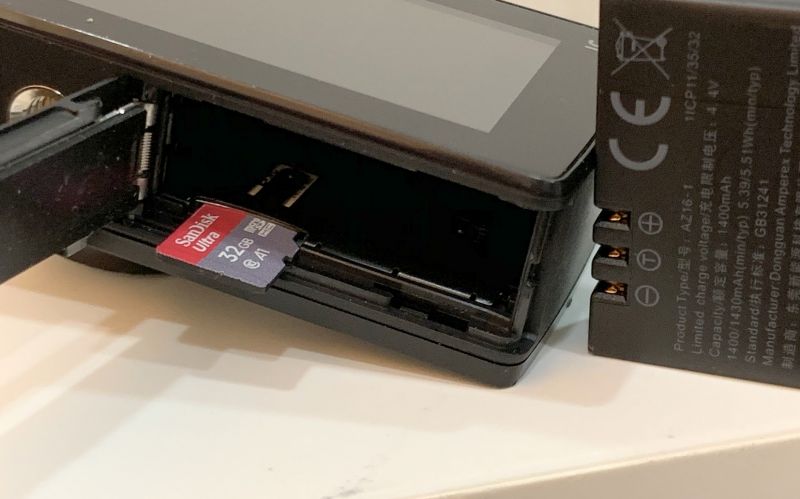
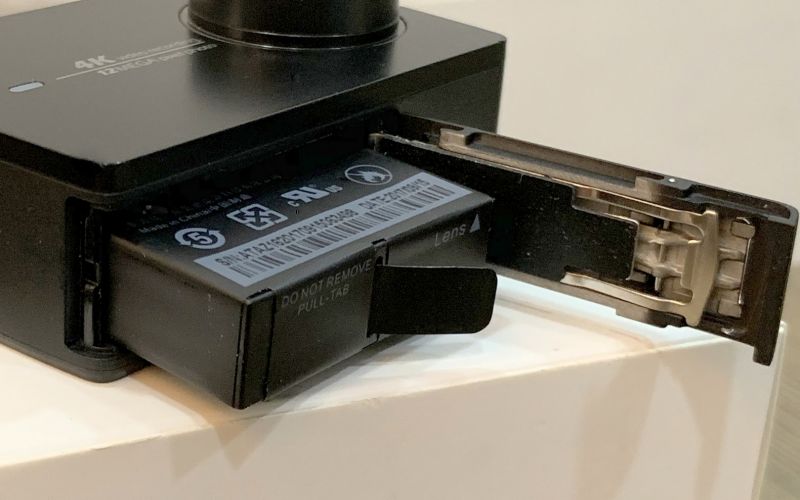
As for the videos, the Yi 4K camera can record videos up to 4K 3160p UHD (3840x2160) in wide angle @30.25fps and ultra-wide angle @24fps. Other resolutions are 2.7K @30.25fps to 60fps, 1440p @25fps to 60fps, 1080p Full HD @25fps to 120fps, 960p @50fps to 120fps, 720p @50fps to 240fps, and 480p @200 and 240fps. Videos are recorded in H.264 format in an MP4 container. Timelapse videos possible are 4K and 2.7K @30fps and 25fps respectively with intervals of 0.5, 1, 2, 5, 10, 30 and 60s. Slow motion possibilities can be captured only in 720p @60-240fps with options for 2x, 4x and 8x speeds. The Yi Camera can also do continuous loop recording with video lengths of 5m, 20m, 60m, 120m and unlimited lengths, overwriting the first file and so on. This mode is great when you need to use it like a surveillance camera in an emergency situation. And yes, post a firmware update, the Yi Action camera also sports voice control where you can instantly tell the camera (using your voice) to start or stop a video, take photos, shoot bursts or simply power off.
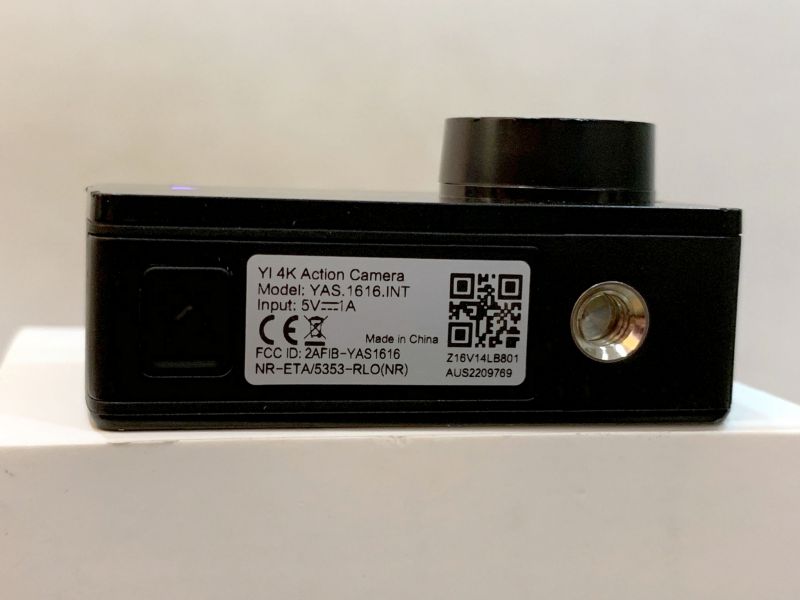
The lens has no optical image stabilization but uses EIS that is pretty good on its own. This EIS uses a 3 axis built-in gyroscope and a 3 axis accelerometer to allow a cross-border compensation algorithm that compensates the motion change to produce stable video quality. Sadly, EIS only works in videos shot on 960p, 1080p and 2.7k modes. Low light mode is automatic and the camera’s ISP kicks in to automatically choose the right settings to get the best results. Lastly, the camera also has a lens distortion correction for compensating the wide-angle view’s barrel distortion on the corners and allows reduce the fish-eye effect by a large scale. As for photo modes, the camera can capture up to 12MP photos with ultra-wide resolutions of 4000x3000 pixels.

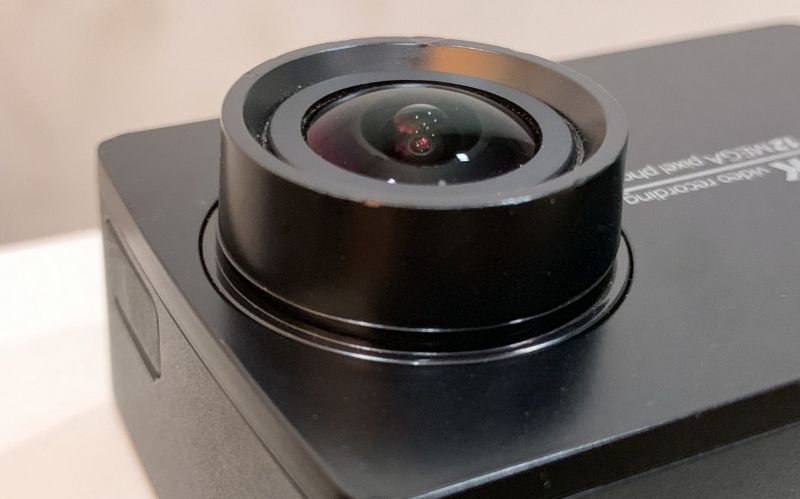
Other options available are (1) timer with 3s to 15s gaps, (2) burst mode with 3 photos per second to 30 photos per 6 seconds, (3) timelapse with intervals from 0.5 seconds to 60 minutes, (4) shutter speed control that can go up to 1/4096s from a min of 30s and lastly (5) ISO speed settings that can be set between ISO 100 and ISO 6400.

As for the feature set on the video front, the Yi 4K Action Camera can be connected to a smartphone app using the built-in Wi-Fi hotspot. You can view the camera live or check out and download the videos from the camera’s storage, wirelessly. Playback on television is also possible provided you buy the optional micro USB to HDMI cable.
As for the camera, on the whole, we do need to address that in comparison with GoPro’s offering, the GoPros come bundled with a few mounts and a housing that makes them ready to use at purchase. The GoPros come with a camera housing that allows you to latch on to the GoPro tripods or to a helmet or vehicle mount. As for the Yi Camera, you don’t get anything in the box and mounts and housings are optional purchases. Also, since the GoPro is completely waterproof, it can be taken underwater without any housing, but Yi Camera needs a watertight housing for using underwater or in the rain. However, Yi’s tripod mount is a standard screw-hole which is compatible with any tripod or selfies stick out there, while GoPro’s mounts are not tripod compatible and need compatible accessories only.

The user interface is pretty standard and straight forward. A long press on the shutter release button turns on/off the camera, while the rest of the interface can be handled by the touchscreen display itself. The interface has all the information you need on it – the status bar on top shows the mode icon with timers for remaining video and current time in video mode and similar with photos, all depending on the storage capacity. Apart from this, icons for Wi-Fi and mic on/off and battery are also available. Swiping on the screen from left to right and vice versa allows you to change the modes between video/photo/burst/timelapse and slow motion respectively. A settings icon on the bottom right helps you to fine-tune your mode requirement, while a playback icon on the bottom left takes you to the gallery. Everything is simple and straight-forward and is very easy to understand and operate.
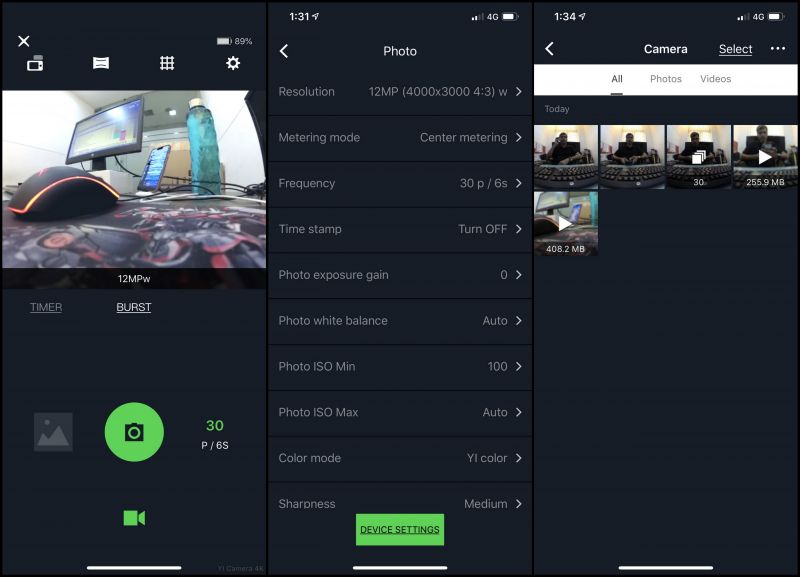
The camera can also be controlled completely from the smartphone app. Simply download the Yi Action app from the respective stores on Android or iOS and you are good to go. You can either activate your account by signing up for a new account or use it as-is. An account allows you to upload and store your videos and photos online, provided you pay for the cloud storage according to their plans. The app allows you to use the smartphone as a live viewfinder and you can operate the camera completely from the app itself. You can control the shutter button, tweak settings, and a lot more from the app itself. This is very helpful when using the camera in a waterproof housing or when mounted on a tripod/mount which makes it difficult for you to operate.
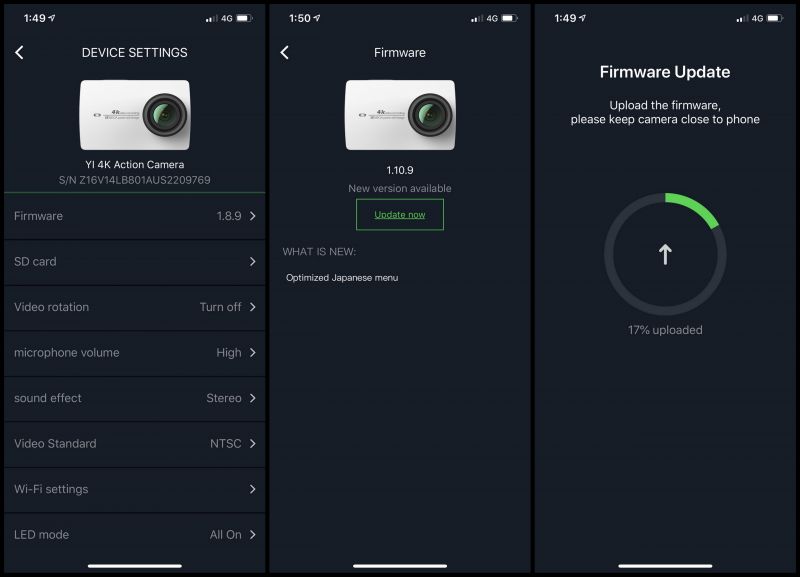

The app also has the gallery option where you can view the storage files (photos, videos, bursts, timelapse, etc) and you can play or download them to your smartphone too – for storage or sharing, as you wish. The app connects to the camera using the Wireless network where the camera creates a hotspot and your smartphone latches on. The app will guide you on how to get started, and within a few minutes, you are set to go. However, using the camera from the smartphone has a 1-2 second delay in the video/frame and you should not rely on the viewfinder for crucial time-based shots. The app is a mere remote control for your camera and does the best as required.
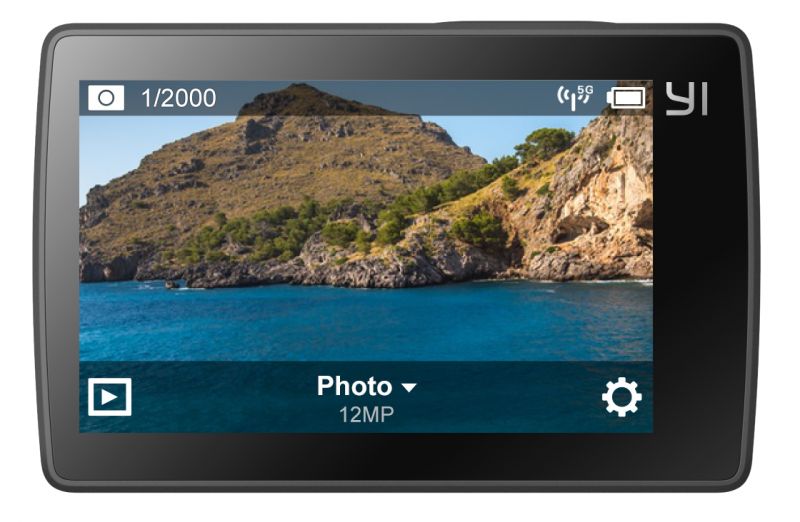
We found that the Yi Camera is almost at par with what professional action cameras such as GoPros offer. In fact, the Yi is all out to compete with GoPro in terms of similarity and performance. However, Yi still needs to up their game where waterproofing is concerned. But that is completely nitpicking — not all action camera users would be water-world freaks. The power/shutter button is all that you need to click to operate the camera in standalone mode, but it is very soft and you could end up accidentally starting or stopping recording when handling the camera.
As for the performance, this one does manage to go head to head with GoPro. We are not adventurous and did not actually take this camera out on holidays and sports events. As for our tests, we did manage taking it outdoors between work and home. In between, we also did use the camera on photo mode and were impressed with what it could manage. Simplistic, the camera manages to work well with photos, even when left on the auto mode by default. The Yi Camera also has its own technology called Yi Colour which enhanced the colours in the video — similar to GoPro’s Protune feature. While the feature is definitely commendable, it does not manage to keep up with how GoPro’s Protune technology enhances the videos.
Videos were remarkably good, especially the wide-angle footage that it can capture. 4K videos shot at 30fps are bright, smooth and have plenty of details. Colours are natural too. However, the videos in 4K do have slight jitters when panning. When used in low light, especially indoors, you will see noise setting in and a few grainy shots in your frame. There is a lack of details noticeable, but is not that bad, considering that action cameras are usually used during broad daylight.
As for EIS, we did see that there is a vast difference in having it there. Available only in 24fps mode, we advise you to shoot your 4k videos in 4K (24fps) if you are using it on a vehicle/helmet mount or on a handheld mount. If you are using it on stable ground, then 30fps is your good friend. If video performance is what you need, then sobering it down to 1080p @120fps is the best settings we saw. The higher frame rate allows for a smoother video. While most casual videos could be shot on 1080p, it also makes a big deal when used for sharing, apart from saving on battery and storage. If you are using it for professional use or want that shot to be in perfect 4K, then you may need to use an external stabilizer accessory in combination.
















While the GoPro does offer a massive load of features, such as waterproof body, GPS and on-smartphone instant video creating app (Quik), you certainly end up paying a premium for the same. Leave the GoPro for the professionals, the Yi 4K camera caters to users who want an action camera ‘when they occasionally require it.’ The longer battery life, almost similar capture performance and huge price difference definitely cut the deal for those choosing between a GoPro and a Yi. If you are looking out for an action camera, the Yi 4K Action Camera seems like a steal especially if you are looking for one on a low budget. Priced at a sweet Rs 8,999 only, the Yi 4K action camera is a superb offering for those seeking 4K videos using a standalone compact camera. The Yi 4K Action Camera is less than half the price of the cheapest GoPro today, and amateurs can now shoot their videos with the similar competitive quality and performance that GoPro cameras offer, without shelling out too much of money.
